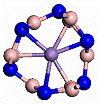Department of Physics and Astronomy: Publications and Other Research
Document Type
Article
Date of this Version
2017
Citation
“Laser-Assisted Nanowelding of Graphene to Metals: An Optical Approach Toward Ultralow Contact Resistance,” Kamran Keramatnejad, Yun Shen Zhou, Dawei Li, Hossein Rabiee Golgir, Xi Huang, Jingfeng Song, Stephen Ducharme, and Yong Feng Lu, Advanced Materials Interfaces 4, 1700294 (7) (2017). http://dx.doi.org/10.1002/admi.201700294
Abstract
The electrical performance of graphene-based devices is largely limited by substantial contact resistance at the heterodimensional graphene-metal junctions. A laserassisted nanowelding technique was developed to reduce graphene-metal (G-M) contact resistance and improve carrier injection in suspended graphene devices. Selective breakdown of C-C bonds and formation of structural defects were realized through laser irradiation at the edges of graphene within the G-M contact regions in order to increase the chemical reactivity of graphene, facilitate G-M bonding and, therefore, maximize interfacial carrier transportation. Through this method, significantly reduced G-M contact resistances, as low as 2.57 Ω-μm were obtained. In addition, it was demonstrated that the location of laser-induced defects within the contact areas significantly impacts the interfacial properties and the carrier mobility of graphene devices. A fourfold increase in photocurrent was observed in the suspended graphene photodetectors with treated G-M interfaces as compared to ordinary ones. This contact-free and position-selective technique minimizes the degradation of the graphene channels and maintains the superior performance of graphene devices, making it a promising approach for reducing G-M resistance in the fabrication of graphene-based devices.



Comments
Copyright 2017 John Wiley. Used by permission.